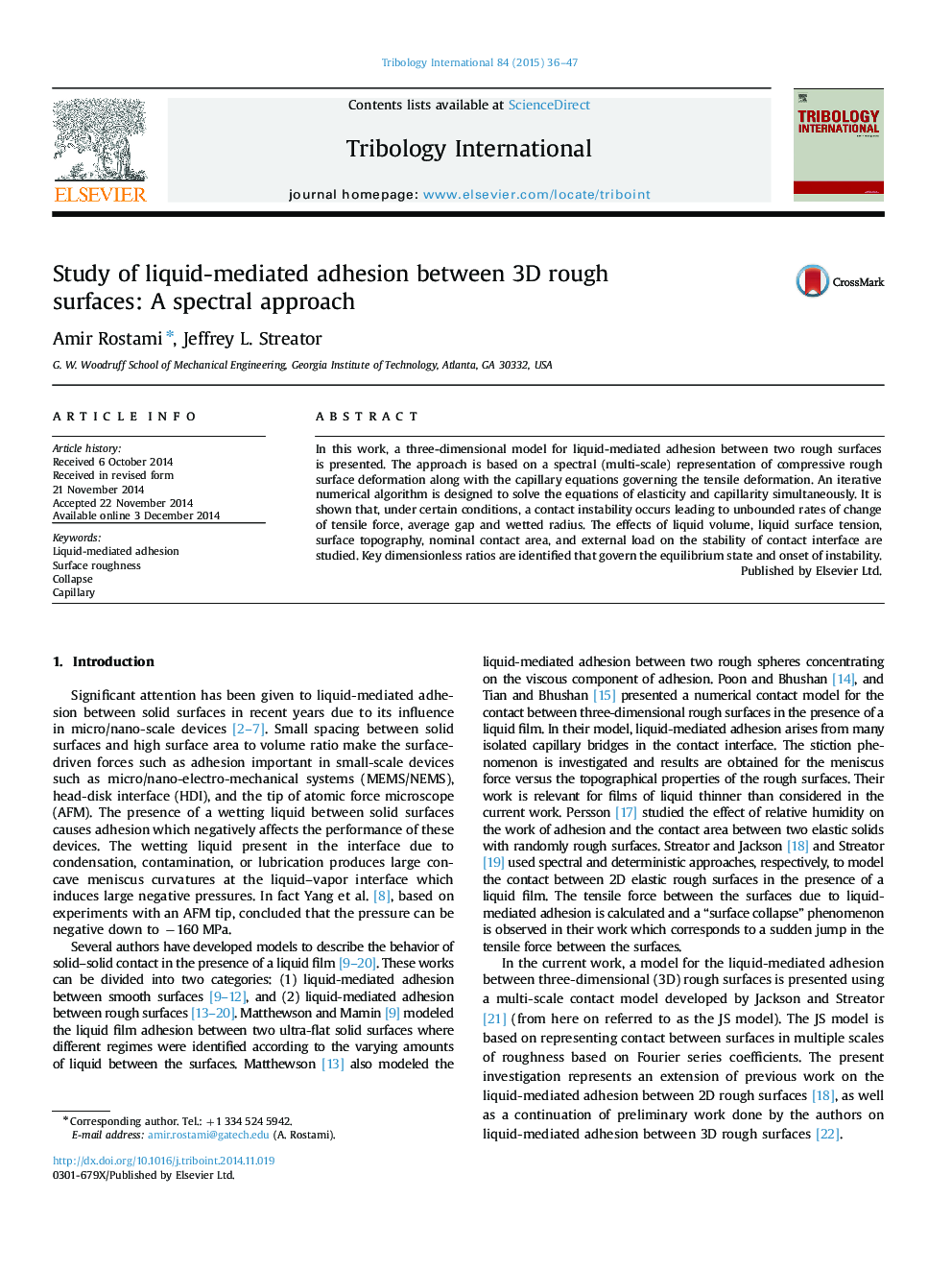| Article ID | Journal | Published Year | Pages | File Type |
|---|---|---|---|---|
| 614651 | Tribology International | 2015 | 12 Pages |
•Liquid-mediated adhesion between rough surfaces is modeled using a spectral approach.•Results are obtained for the tensile (adhesion) force between the rough surfaces.•A parametric study is performed to study the effect of different related properties.•Empirical equations are presented to predict the point of contact instability.
In this work, a three-dimensional model for liquid-mediated adhesion between two rough surfaces is presented. The approach is based on a spectral (multi-scale) representation of compressive rough surface deformation along with the capillary equations governing the tensile deformation. An iterative numerical algorithm is designed to solve the equations of elasticity and capillarity simultaneously. It is shown that, under certain conditions, a contact instability occurs leading to unbounded rates of change of tensile force, average gap and wetted radius. The effects of liquid volume, liquid surface tension, surface topography, nominal contact area, and external load on the stability of contact interface are studied. Key dimensionless ratios are identified that govern the equilibrium state and onset of instability.
